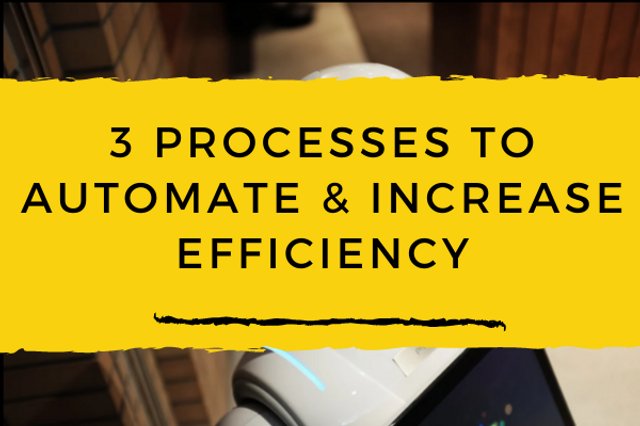Are you looking to make your financial life easier and more efficient? Look no further! In this blog article, we will provide you with practical tips for automating your finances efficiently. By incorporating automation into your money management routine, you can simplify your processes and gain better control over your financial goals. From setting up automatic bill payments to creating savings goals, we’ll guide you step by step on how to make the most out of automation. So, let’s dive in and discover how to optimize your financial life effortlessly.
Tips for Automating Your Finances Efficiently
Managing your finances can be a daunting task, but with the advancements in technology, automating your finances has become easier than ever. Automating your finances not only saves time and effort, but it also helps you stay organized, reduce the risk of human error, and ensure that your bills are paid on time. In this article, we will explore a variety of tips and strategies to help you automate your finances efficiently.
1. Set Up Automatic Bill Payments
One of the first steps to automating your finances is setting up automatic bill payments. This ensures that your bills are paid on time, avoiding late fees and potential damage to your credit score. Here are a few tips to get started:
- Create a list of all your recurring bills, including utilities, rent or mortgage, car payments, and credit card bills.
- Contact each company to set up automatic payments. Most companies provide an online portal where you can enter your bank or credit card details to automate the payment process.
- Review your bank statements regularly to ensure that the payments are being processed correctly and there are no unexpected charges.
2. Utilize Automatic Savings
Saving money is crucial for financial stability and achieving your long-term goals. Automation can make saving effortless. Here are a few strategies to consider:
- Set up automatic transfers from your checking account to a savings account on a regular basis. Determine an amount that you can comfortably save each month, and have it transferred automatically.
- Consider using apps or online platforms that round up your purchases to the nearest dollar and deposit the extra change into a savings or investment account.
- Take advantage of retirement savings plans, such as employer-sponsored 401(k) plans, which deduct contributions directly from your paycheck before taxes.
3. Use Budgeting Software
Budgeting is a fundamental aspect of managing your finances effectively. Fortunately, there are various budgeting software and apps available to simplify the process. Here’s how you can leverage them:
- Research and choose a budgeting tool that aligns with your financial goals and preferences. Some popular options include Mint, You Need a Budget (YNAB), and Personal Capital.
- Link your bank accounts, credit cards, and other financial accounts to the budgeting software to automatically import your transactions.
- Categorize your expenses and set budget limits for each category. The software will track your spending and send alerts when you exceed your budget in a particular category.
4. Opt for Electronic Statements
By opting for electronic statements instead of paper statements, you can streamline your financial record-keeping and reduce clutter. Here’s how you can make the most of electronic statements:
- Sign up for e-statements with your bank, credit card companies, and other financial institutions. This will allow you to receive your statements electronically instead of via mail.
- Create a dedicated folder in your email inbox to store electronic statements for easy access. Make sure to organize them by date or category to keep everything organized.
- Review your electronic statements regularly to track your spending, identify any errors, and ensure that you’re staying within your budget.
5. Implement Alerts and Notifications
Automated alerts and notifications can help you stay on top of your financial activities and avoid unnecessary fees or penalties. Consider the following methods:
- Set up mobile or email alerts for low account balances, unusual transactions, or approaching bill due dates. This will help you avoid overdraft fees and fraud.
- Enable notifications from your budgeting software or banking app to receive updates on important financial events, such as deposits, withdrawals, or when you’ve reached a budget limit.
- Regularly review and adjust your notification preferences as needed to ensure they align with your financial goals and needs.
6. Automate Debt Repayment
If you have outstanding debts, automating your debt repayment can help you stay on track and avoid unnecessary interest charges. Consider the following strategies:
- Set up automatic payments for your credit cards and loans to ensure that you never miss a payment.
- If possible, consider increasing your automatic payment amount to pay off your debts faster and save on interest in the long run.
- Explore balance transfer options to consolidate your debts onto a single credit card with a lower interest rate. Automate the monthly payments to avoid missing any deadlines.
7. Regularly Review and Adjust
While automation can greatly simplify your financial management, it’s essential to regularly review and adjust your automated systems to ensure they align with your goals. Consider the following steps:
- Set aside time each month to review your financial accounts, expenses, and savings progress. This will help you identify any issues or areas for improvement.
- Make adjustments to your budgeting categories and limits as needed. Life circumstances and financial goals can change, so it’s essential to update your automated systems accordingly.
- Stay informed about new technologies and financial services that could enhance your automation efforts. Continuous learning and exploration can help you optimize your financial management.
In conclusion, automating your finances efficiently can provide numerous benefits, including time savings, increased accuracy, and improved financial control. By following these tips, you can streamline your financial management processes and achieve your financial goals with ease. Remember, automation is a tool to assist you in managing your finances, but it’s crucial to regularly review and actively participate in your financial journey.
Lesson 6: How Do I Automate My Finances?
Frequently Asked Questions
Tips for Automating Your Finances Efficiently
How can I automate my bill payments?
Setting up automatic bill payments is a convenient way to ensure that your bills are paid on time. Most banks offer online bill payment services that allow you to schedule recurring payments for your utility bills, credit card bills, and other expenses. You can simply set the payment amount, date, and frequency, and your bank will take care of the rest.
What are the benefits of automating my savings?
Automating your savings can help you build a healthy financial cushion without even thinking about it. By setting up automatic transfers from your checking account to a separate savings account, you can ensure that a fixed amount of money is saved every month. This not only helps you reach your savings goals faster but also eliminates the temptation to spend the money elsewhere.
How can I automate my investment contributions?
Many investment platforms offer the option to set up automatic contributions to your investment accounts. By automating your investment contributions, you can ensure that you consistently allocate a portion of your income towards your investment portfolio. This helps in building wealth over time and takes advantage of the power of compounding.
Can I automate tracking my expenses?
Yes, you can automate the process of tracking your expenses by using personal finance apps and software. These tools can sync with your bank accounts and credit cards to categorize your transactions automatically. They provide an overview of your spending patterns, allowing you to identify areas where you can cut back and save more.
What are the risks of automating my finances?
While automating your finances can offer numerous benefits, it’s important to be aware of the potential risks. One such risk is the possibility of overdrawing your account if you haven’t properly managed your automatic payments and transfers. Additionally, relying solely on automation may make you less mindful of your spending habits, which could lead to overspending.
How often should I review my automated finances?
It is recommended to review your automated finances periodically to ensure that everything is running smoothly. This includes checking your bill payment schedules, reviewing your savings contributions, and monitoring your investment accounts. By reviewing your automated finances regularly, you can catch any errors or discrepancies early and make any necessary adjustments.
What steps should I take to automate my finances?
To automate your finances efficiently, start by identifying your financial goals and priorities. Set up automatic bill payments, savings transfers, and investment contributions through your bank or relevant platforms. Use personal finance apps to track your expenses automatically. Regularly review and analyze your automated finances to make sure they align with your goals.
Can I customize the automation of my finances?
Yes, you can customize the automation of your finances based on your specific needs and preferences. Most banks and financial platforms allow you to adjust the frequency and amount of your automated payments and transfers. Additionally, personal finance apps often provide customizable spending categories and budgeting features to tailor your financial automation to your unique situation.
Final Thoughts
In conclusion, automating your finances efficiently is essential for achieving financial stability and peace of mind. By employing smart strategies, you can streamline your financial management and save time and effort. Start by setting up automatic bill payments and transfers to ensure timely payments and savings contributions. Utilizing budgeting and expense tracking apps can help you monitor your spending and identify areas for improvement. Consistently reviewing and adjusting your automated systems will ensure they align with your financial goals. With these tips for automating your finances efficiently, you can simplify your money management and focus on what matters most.



